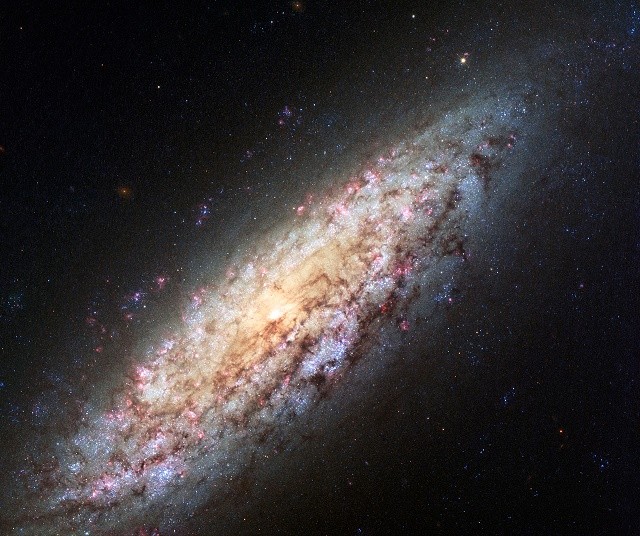A galaxy is found in the far stretches of the universe called NGC 6503 where it appears to be so isolated in the deep galactic abyss that scientists consider it as literally lost in space.
Captured by NASA and European Space Agency's Hubble Space Telescope, the image of this lonesome galaxy appears to be shining in a stunning brilliance of visible light along with ultraviolet light where different hues of color present different zones of gas and star formations as this image was released on Wednesday, June 10.
The image shows the galaxy NGC 6503 where it appears to float in the middle of deep space in between the empty spaces of space, far from any neighboring galaxies called the Local Void. This Local Void is apparently considered to be a cosmic dead zone measuring some 150 million light years across.
This galaxy is some 18 million light years away from Earth and the constellation called Draco.
According to NASA, this galaxy is also found in a bizarre location in space, found on the edge of never-land as described by stargazer Stephen James O'Meara where he described it as a "Lost in Space galaxy" on his book, Hidden Treasures in 2007.
Hubble's recent image of the galaxy reveals different variations of zones within its range which spans some 30,000 light years across, roughly one third the size of the Milky Way galaxy.
The red regions indicate hot gas and the blue ones contain even hotter galactic material as it spawns new stars and the dark brown areas represent space dust lanes that stretches from the lighter regions found in the center of the galaxy towards its arms outward.
This particular image is a composite image from two sets of observations conducted by the Hubble. The first set was made in 2003 using the Hubble's Advanced Camera for Surveys and the last one was made in 2013 using the Wide Field Camera 3.




























